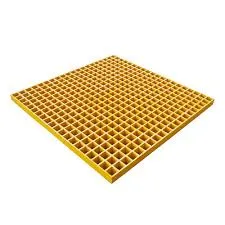
-
 Afrikaans
Afrikaans -
 Albanian
Albanian -
 Amharic
Amharic -
 Arabic
Arabic -
 Armenian
Armenian -
 Azerbaijani
Azerbaijani -
 Basque
Basque -
 Belarusian
Belarusian -
 Bengali
Bengali -
 Bosnian
Bosnian -
 Bulgarian
Bulgarian -
 Catalan
Catalan -
 Cebuano
Cebuano -
 China
China -
 China (Taiwan)
China (Taiwan) -
 Corsican
Corsican -
 Croatian
Croatian -
 Czech
Czech -
 Danish
Danish -
 Dutch
Dutch -
 English
English -
 Esperanto
Esperanto -
 Estonian
Estonian -
 Finnish
Finnish -
 French
French -
 Frisian
Frisian -
 Galician
Galician -
 Georgian
Georgian -
 German
German -
 Greek
Greek -
 Gujarati
Gujarati -
 Haitian Creole
Haitian Creole -
 hausa
hausa -
 hawaiian
hawaiian -
 Hebrew
Hebrew -
 Hindi
Hindi -
 Miao
Miao -
 Hungarian
Hungarian -
 Icelandic
Icelandic -
 igbo
igbo -
 Indonesian
Indonesian -
 irish
irish -
 Italian
Italian -
 Japanese
Japanese -
 Javanese
Javanese -
 Kannada
Kannada -
 kazakh
kazakh -
 Khmer
Khmer -
 Rwandese
Rwandese -
 Korean
Korean -
 Kurdish
Kurdish -
 Kyrgyz
Kyrgyz -
 Lao
Lao -
 Latin
Latin -
 Latvian
Latvian -
 Lithuanian
Lithuanian -
 Luxembourgish
Luxembourgish -
 Macedonian
Macedonian -
 Malgashi
Malgashi -
 Malay
Malay -
 Malayalam
Malayalam -
 Maltese
Maltese -
 Maori
Maori -
 Marathi
Marathi -
 Mongolian
Mongolian -
 Myanmar
Myanmar -
 Nepali
Nepali -
 Norwegian
Norwegian -
 Norwegian
Norwegian -
 Occitan
Occitan -
 Pashto
Pashto -
 Persian
Persian -
 Polish
Polish -
 Portuguese
Portuguese -
 Punjabi
Punjabi -
 Romanian
Romanian -
 Russian
Russian -
 Samoan
Samoan -
 Scottish Gaelic
Scottish Gaelic -
 Serbian
Serbian -
 Sesotho
Sesotho -
 Shona
Shona -
 Sindhi
Sindhi -
 Sinhala
Sinhala -
 Slovak
Slovak -
 Slovenian
Slovenian -
 Somali
Somali -
 Spanish
Spanish -
 Sundanese
Sundanese -
 Swahili
Swahili -
 Swedish
Swedish -
 Tagalog
Tagalog -
 Tajik
Tajik -
 Tamil
Tamil -
 Tatar
Tatar -
 Telugu
Telugu -
 Thai
Thai -
 Turkish
Turkish -
 Turkmen
Turkmen -
 Ukrainian
Ukrainian -
 Urdu
Urdu -
 Uighur
Uighur -
 Uzbek
Uzbek -
 Vietnamese
Vietnamese -
 Welsh
Welsh -
 Bantu
Bantu -
 Yiddish
Yiddish -
 Yoruba
Yoruba -
 Zulu
Zulu
fiberglass ducts demonstrate exceptional resistance against ...
The Exceptional Resistance of Fiberglass Ducts
In the ever-evolving world of construction and engineering, the materials we use can significantly impact the efficiency, durability, and longevity of infrastructure. Among these materials, fiberglass ducts have emerged as a standout choice, showcasing exceptional resistance to a variety of environmental factors. This unique property makes them indispensable in modern HVAC systems and industrial applications.
Fiberglass, made from woven glass fibers and resin, is known for its lightweight nature and high strength-to-weight ratio. This composition enables fiberglass ducts to withstand not only extreme temperatures but also harsh chemicals and moisture. Unlike traditional metal ducts, fiberglass does not corrode over time; instead, it maintains its structural integrity even in the most demanding conditions. This resistance to corrosion is particularly beneficial in industries such as chemical processing, where exposure to caustic substances is commonplace.
Moreover, fiberglass ducts are highly resistant to mold and bacteria, crucial for maintaining indoor air quality. The non-porous surface deters the growth of microorganisms, which can thrive in damp environments, particularly within traditional duct systems. This characteristic makes fiberglass ducts ideal for hospitals, laboratories, and food processing facilities, where hygiene is paramount. By minimizing the risk of contamination, these ducts not only ensure a cleaner environment but also contribute to the health and safety of occupants.
fiberglass ducts demonstrate exceptional resistance against ...

One of the remarkable features of fiberglass ducts is their thermal insulation properties. The material naturally resists heat transfer, leading to improved energy efficiency in HVAC systems. This insulation capability prevents heat loss or gain, which is essential for maintaining stable indoor temperatures. As energy costs continue to rise, the efficiency of a building's heating and cooling systems becomes increasingly critical. Fiberglass ducts help in reducing energy consumption, ultimately lowering operational costs for businesses and homeowners alike.
Additionally, the installation of fiberglass ducts is relatively straightforward, often leading to reduced labor costs and downtime. Their lightweight construction allows for easier handling and installation, providing a significant benefit for contractors and engineers who seek efficiency in project timelines.
In conclusion, fiberglass ducts demonstrate exceptional resistance against environmental challenges, making them an ideal choice for a wide range of applications. Their corrosion resistance, mold and bacteria prevention, thermal insulation properties, and ease of installation establish them as a superior alternative to traditional duct materials. As industries continue to prioritize efficiency and health, the demand for fiberglass ducts is likely to grow, solidifying their position in modern construction and engineering practices.
Latest news
-
Exploring the Benefits of Top Hammer Drifter Rods for Enhanced Drilling PerformanceNewsJun.10,2025
-
High-Precision Fiberglass Winding Machine for GRP/FRP Pipe Production – Reliable & Efficient SolutionsNewsJun.10,2025
-
FRP Pipes & Fittings for Shipbuilding - Corrosion-Resistant & LightweightNewsJun.09,2025
-
Premium FRP Flooring Solutions Durable & Slip-ResistantNewsJun.09,2025
-
Premium Fiberglass Rectangular Tanks Durable & Lightweight SolutionNewsJun.09,2025
-
Tapered Drill String Design Guide Durable Performance & UsesNewsJun.09,2025









